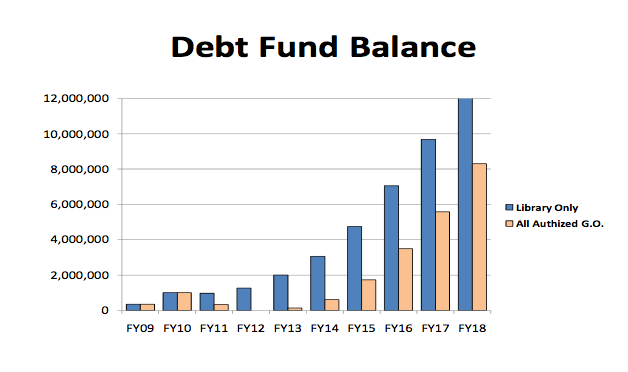Sponsored by southwest Orange County residents Tony Blake, Walt Lobotsky, Clifford Leath, Deonna Angelillo, and Susan Lombardo, tonight’s community meeting (WEBSITE) discussing the siting of a new UNC airport, was packed. Roughly 270 folks, from all around the county, attended the meeting to find out the latest on UNC’s (and now, as reported, Orange County’s economic development director Broadwell’s) plans to build a general aviation airport.
UNC’s original reason for creating a new airport was to support the NC-AHEC ( North Carolina Area Health Education Centers Program).
UNC’s director for Carolina North Jack Evans reaffirmed during last Thursday’s joint meeting between UNC and Chapel Hill’s Town Council (discussing a framework for approving Carolina North’s development), NC-AHEC’s current base at Horace-Williams airport (HWA) will be closed when the new Innovation Center is complete (2 years or so). Last week, Bruce Runberg, UNC’s Associate Vice Chancellor for Facilities Planning and Construction, said that a $2 million contract has been let to build hangars at RDU to “temporarily” house the program. Execution of that contract is contingent on a few factors, money, it appears, isn’t one.
Supporting AHEC, as folks and local media drilled down to the nitty-gritty, seems to have been just a smokescreen as, now, it appears that a much more extensive project – supporting well-heeled alumni, UNC corporate clients, AOPA members, local pilots and some vague mix of commercial interests – with a bigger facility is in the offing. To justify this vast extension, UNC has suggested great public benefit – to the tune of millions. No downside – environmental, community or other – has been mentioned (it’s all roses).
As CitizenWill readers might remember from previous comments, I found UNC’s consultants Talbert & Bright’s 2008 report of an economic impact of $40 million to $53 million a year ridiculous and near insulting to our community’s intelligence.
I’ve asked (letter here) the Orange County Board of Commissioners to appoint me as one of their three community representatives to UNC’s new Airport Authority to help bring objective standards to any decision on building and siting – if necessary – an appropriately sized facility for the originally constrained purpose.
I have a number of reasons, one of which, as the Chapel Hill News recently reported, was the terrible precedent of granting open-ended power of eminent domain to a University:
Will Raymond, a former candidate for Town Council, says the decision to form an airport authority was “a terrible mistake by our legislature.”
“Setting this precedent, for reasons good or bad, will probably make policy interactions with UNC-CH more difficult in days to come,” he said in a letter to the Orange County commissioners. “Essentially, the legislature has issued UNC a huge hammer, with the power of eminent domain, that I believe should be reserved exclusively to elective government.”
Are we to think that this power will be reserved only for UNC-Chapel Hill?
Beyond maintaining due vigilance, as a member of the Authority, in the exercise or threatened exercise of the awesome power of “public taking”, I will do my best to document the Authority’s deliberations, publish as much of the supporting documentation as possible and provide an analysis, of course from my own viewpoint, of the progress being made. More importantly, I will work to be a conduit for the wider community’s concerns about the process, the suitability of sites and other relevant issues. I’m sure that both the appointed elective officials and UNC officials will do the same, but I know I can provide community perspectives that I know will be distinct from theirs.
Here are some notes from this evening’s meeting.
Deonna Angelillo made initial introductions and a few comments, noting “no curtains in our neighborhood” and she wants it to stay that way. Her house is on the end of the site H runway.
Clifford Leath, whose 40 acre horse farm is on that runway, led off with a quick summary of recent history. While discussing strategy he said “we’re really fighting the state of North Carolina”, not local governments. Expressing incredulity, he outlined the 2005 estimated cost of $35M to develop site ‘H’ – a figure he and others felt underestimated both today’s costs and the required build-out of infrastructure – road-widening, electric, etc. Suggesting that the second Talbert/Bright study was commissioned “by a misguided planning person”, he emphasized that an objective analysis needed to be done.
A sentiment that was shared by others throughout the evening was “there’s certainly a hidden agenda here and it is not AHEC”. He said he had contacted a number of officials with little response though the UNC System’s Erskine Bowles did tell him that “no site was preferred”. He ended up his presentation expressing a lack of confidence in the proposed Authority’s decision-making process as the community will be represented by only 5 of the 15 members (the rest being UNC related).
Tony Blake, a volunteer fireman with an impressive command of both the history and breadth of the airport drama, went over some of the political dimension of the issue. “This all started as a bill introduced by Verla Insko and Bill Faison”. Later in the evening, it was suggested someone run as a write-in against Faison to “get his attention”. Tony got to the crux of his community’s problem – “they have eminent domain – they can set the price and take the land”. Echoing Clifford’s concern, he said “they’ve stacked the board, they have 2/3rd majority”. He went on to show that by creating this Authority our local legislators – Insko, Faison and Hackney, have bypassed the county’s.
“This is not politics, this piracy!” was his call to arms. “They are going to take land here and we have to let them know that it is” not acceptable.
Tony went on to say he thinks there is a window of opportunity to shutdown creation of Authority. Failing that, that the legislature directed the Authority to “find that the airport is critical to the operation” of AHEC. One avenue of defense was to challenge the necessity of building a $35-50 million general aviation airport when a $2 million hangar at RDU would suffice. They “don’t need to reinvent the wheel with a county airport”.
Tactically, he said, “each site needs to tackle its own specifics.” Building on the strength of community, he challenged his gathered neighbors to work with all the affected communities. “If site 9 has a petition, then site H needs to sign it.” Yes, he said, each site needs to build a case – environmental, social, just a bad idea – in order to “convince the university that this [building vs. using RDU] is a bad idea”.
His final strategy? Attack the granting of eminent domain powers. It was a bad idea – “that it is a sword poised above our heads” – “ultimately we need to get this law repealed…..”
Finishing he said “we need to get our message out there” – “not the lipstick on the pig that is their spin on the airport”.
The next speaker, Laura Streitfeld said “the idea that our land would be taken for the benefit of the few” was disturbing but that the fight can’t be just about NIMBYism (Not In My Back Yard). “It’s pretty clear that nobody wants it in their backyards, but that isn’t too different than anyone else”, she said but went on to argue that the issues – the grant of eminent domain, multi-county environmental consequences, waste of tax dollars, etc. – went well beyond the local scope of site H. She also said she would “stand in front of the bulldozer” to stop that site from being developed.
Bonnie Hauser, representing a group called “Orange County Voice” (more here) said “our goal is to repeal this eminent domain law.” “We are fighting this as an overarching act” of abuse of eminent domain. And that “We don’t understand why UNC is doing economic development plans for Orange County”.
Neither do I, except as a strategy to get Federal dollars. The utility of this general aviation airport has to be justified with benefit to the wider community in order for Federal grants to be approved.
Judith Wegner, former UNC Law Dean and current member of the Orange County Planning Board, called on the assembled citizenry to ‘write Bill Faison” ( Billf@ncleg.net [ 919-715-3019 ] ) noting “he is running unopposed.” “We should run a write-in candidate” to oppose Faison because “everyone should ask ‘Why are we doing this?””.
She also asked folks to send on specific impacts to the Orange County Planning Board (CONTACT HERE) because “we need to document it…for planning board.”
There were a number of comments and questions from the crowd. A woman stood up waving a copy of a UNC publication (didn’t quite catch the name) pointing out how commercialized Dr. Roper’s UNC Healthcare has become these last few years (here’s what I said about that on the appointment of Rev. Seymour as UNC Healthcare’s ombudsman in 2006).
“UNC has turned into a corporate entity”, she said, reeling off the corporate influence on UNC Healthcare, “How many of the corporate execs have jets?” “How many AHEC doctors”? I don’t know how many are used by corporate execs, but as a neighbor of HWA, I can assure you that jets are not uncommon.
One resident asked about UNC’s research property, which abuts one of the proposed sites. He said that he had heard a “secret lab” with hermetically sealed doors had been buried 80 feet below the surface. He wanted to know if that had anything to do with the proposed airport site.
Fred, a pilot, said he had worked with the former HWA flying club for four years and, in his experience, AHEC “are fools.” He suggested that “there is a lot of undeveloped land that the county could use that doesn’t involve stealing it from people who have lived here for generations.”
A great question concerned the spread of UNC’s airport into the surrounding community.
It had been noted ealier that the language of the bill authorizing the creation of the Authority could be interpreted broadly enough to justify, at least in the Authority’s eyes (and maybe with the rah-rah approval of Orange County’s economic officer), the taking of surrounding property to support commercial activity at the new airport. In that citizen’s words, the powers conferred “to expand as they saw fit.”
This prompted Tony Blake to observe that instead of the hotels and restaurants the Talbert/Bright study envisioned, the outcome would be more akin to Burlington’s experience – “a wasteland”. Trucking companies and other undesirable commercial uses not very complimentary to the rural way of life.
The airport wasn’t the only topic discussed. At the end of the evening, a resident living off Hwy 54 brought up the siting of the new solid waste transfer station. I hope to ‘blog more on my conversations with Hillsborough’s widening opposition – whom are having a meeting Oct. 2nd, 7pm at the Hillsborough United Church of Christ, corner of Old 86/Davis Rd. In his case, he was concerned about the 4 sites west along Hwy 54.
The gentleman next to me, a former manager in Chapel Hill’s public works, pointed out that Chapel Hill’s garbage trucks were geared in such a fashion that long-distance hauls will burn fuel outrageously, thus be prohibitively expensive (I sent an email to Howard Harvey, Chapel Hill’s Solid Waste Superintendent asking about this – I’ll post his response).
There were many other great comments, questions and observations and some very encouraged folks. It was heartening to see a community pull together to challenge UNC, our local legislators and the State of North Carolina to justify, objectively and with clarity, the reasons for moving forward.






